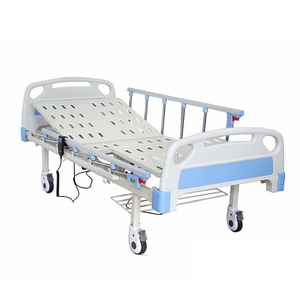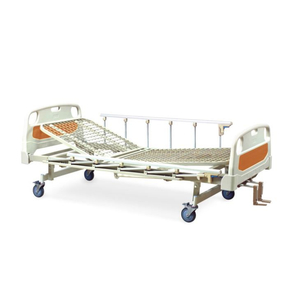Assembling a hospital bed can seem like a daunting task, especially for those who are new to the process. However, with the right instructions and tools, the assembly can be straightforward and efficient. Whether you are a factory worker, distributor, or channel partner, understanding how to put together a hospital bed is essential for ensuring the safety and comfort of patients. In this article, we will guide you through the step-by-step process of assembling a hospital bed, focusing on both manual and electric models. Additionally, we will highlight some common challenges and offer solutions to ensure a smooth assembly process.
Before we dive into the details, it is important to understand the significance of hospital beds in healthcare settings. Hospital beds are designed to provide comfort, safety, and support for patients with varying medical needs. They are equipped with features such as adjustable height, head and foot sections, and side rails, all of which contribute to patient care and recovery. To explore more about the different types of hospital beds, you can visit our Hospital Bed section.
Tools and Equipment Required
Before starting the assembly process, ensure that you have all the necessary tools and equipment. Most hospital beds come with an instruction manual that lists the required tools. Typically, you will need the following:
Screwdrivers (flathead and Phillips)
Wrenches (adjustable or specific sizes)
Allen keys
Rubber mallet (optional)
Gloves for handling heavy parts
Additionally, it is recommended to have a second person assist with the assembly, especially when handling heavy components such as the bed frame and mattress platform. For more information on hospital bed accessories and parts, you can check out our accessories section.
Step-by-Step Assembly Process
1. Unpacking and Organizing Components
The first step in assembling a hospital bed is to unpack all the components and organize them. Hospital beds typically come in several parts, including the bed frame, mattress platform, headboard, footboard, side rails, and motor (for electric beds). Lay out all the parts in a spacious area and cross-check them with the instruction manual to ensure that nothing is missing.
2. Assembling the Bed Frame
The bed frame is the foundation of the hospital bed. Start by connecting the two main sections of the frame, which are usually the head and foot sections. These sections are often connected using bolts and nuts, so ensure that they are tightly secured. If the bed frame has wheels, attach them to the bottom of the frame before proceeding to the next step.
For electric hospital beds, the motor is typically attached to the frame at this stage. Follow the manufacturer's instructions for connecting the motor to the frame, ensuring that all electrical components are properly aligned and secured.
3. Installing the Mattress Platform
Once the bed frame is assembled, the next step is to install the mattress platform. The platform is where the mattress will rest, and it is usually adjustable to allow for different positions. Attach the platform to the bed frame using the provided screws or bolts. Make sure that the platform is level and securely fastened to the frame.
For electric beds, the platform may be divided into sections that can be adjusted independently. Ensure that the motor is connected to the appropriate sections of the platform to enable smooth adjustments.
4. Attaching the Headboard and Footboard
The headboard and footboard are essential components of the hospital bed, providing support and stability. Attach the headboard to the top of the bed frame and the footboard to the bottom. These components are usually secured with screws or bolts, so ensure that they are tightly fastened.
In some cases, the headboard and footboard may have additional features such as built-in controls for adjusting the bed's position. If this is the case, follow the manufacturer's instructions for connecting the controls to the bed's motor.
5. Installing the Side Rails
Side rails are an important safety feature of hospital beds, preventing patients from falling out of bed. To install the side rails, align them with the designated slots on the bed frame and secure them using the provided hardware. Ensure that the rails are properly aligned and can be easily raised and lowered.
Some hospital beds come with adjustable side rails that can be locked in different positions. Test the rails to ensure that they function correctly and provide adequate support for the patient.
6. Connecting the Electrical Components (For Electric Beds)
For electric hospital beds, the final step is to connect the electrical components. This includes connecting the motor to the control panel and ensuring that all wiring is properly secured. Follow the manufacturer's instructions for connecting the power supply to the bed, and test the bed's functions to ensure that it operates smoothly.
It is important to ensure that the bed is connected to a grounded power outlet to prevent electrical hazards. Additionally, check that all moving parts are functioning correctly and that there are no obstructions that could interfere with the bed's operation.
Common Challenges and Solutions
Assembling a hospital bed can sometimes present challenges, especially if you are unfamiliar with the process. Here are some common issues that may arise during assembly and how to address them:
Missing Parts: If you discover that a part is missing, contact the manufacturer or supplier immediately to request a replacement. It is important not to proceed with the assembly until all parts are accounted for.
Difficulty Aligning Components: If you are having trouble aligning the bed frame or other components, double-check the instruction manual to ensure that you are following the correct steps. In some cases, a rubber mallet can be used to gently tap components into place.
Electrical Issues: For electric beds, ensure that all wiring is properly connected and that the bed is plugged into a grounded outlet. If the bed is not functioning correctly, check the control panel and motor for any loose connections.
Assembling a hospital bed may seem complex, but with the right tools, instructions, and patience, it can be completed efficiently. Whether you are working with a manual or electric hospital bed, following the step-by-step process outlined in this article will help ensure a smooth assembly. Remember to double-check all connections and test the bed's functions before use to ensure the safety and comfort of the patient.
For more information on hospital beds and related products, visit our Hospital Bed section. If you have any questions or need assistance with the assembly process, feel free to reach out to our customer service team.





















